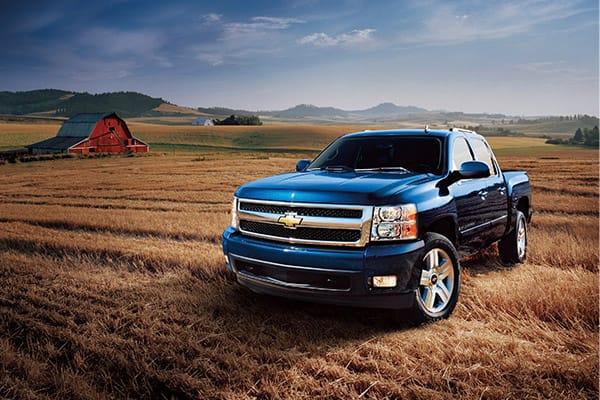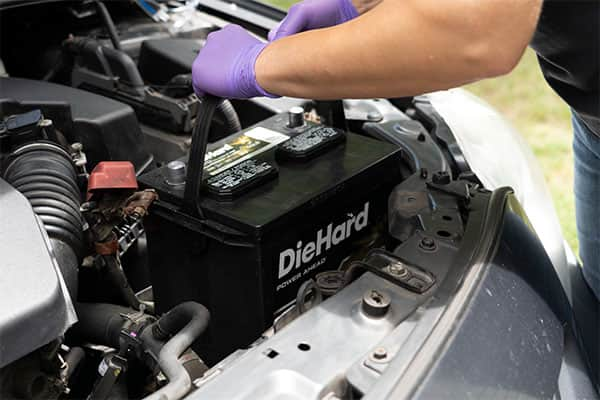Everyone wants a deal. From scouring the internet for discount codes, to hitting up your local dollar store, cheap sells. And where there is money to be made, there are also scammers looking to make a quick buck by selling you junk. You've probably heard about “replica" Rolex watches and Louis Vuitton purses selling for close to the real price, but being utterly worthless once it's discovered that they're fake.
Car parts also suffer from this trend. Big names like K&N, Auto Meter, Edelbrock, Volk Racing, and Sparco all regularly see their designs copied or even stolen by copyright thieves. The prices are way lower, but these fake parts could end up being a costly mistake. I bought these “deals" for cheap. Let's see if they're any good.
Air Intake
A cold air intake is often one of the first modifications performed to a vehicle, and it's a great way to get your start in modding. They're easy to install, provide good results, and don't cost a lot. Since they are already affordable, and usually stuffed into dark corners of the engine bay, air intakes shouldn't be a counterfeited item. While there is some "street cred" to a K&N logo, an intake from a less-known company can work just as well.
Most aftermarket intakes are specific to your year/make/model/engine, but the K&N Apollo Closed Intake System is a one-size-fits-most universal intake kit. Retailers sell it for around $140. An online company known for nearly-free clothing and shoes (if you can wait three weeks) sells the Apollo for $20. Eighty-five percent off is quite the deal, but something isn't right.
After waiting the promised three weeks, the box arrived looking like it rode in the back of a delivery truck with square wheels. Fortunately, bubble wrap saved the day, mostly. After bouncing around during shipping, the intake pipe is still round-ish and should provide a good air supply. More concerning is the air filter housing. The K&N logo looks correct, as do the optional colors, but the paint quality looks like someone sprayed it with their eyes closed.
Quality control then seemingly examined it with their eyes also closed. This bubbling and chipping paint means corrosion or imperfections under the surface, problems that would likely intensify during engine operation. Miles and many heat/cool cycles make the problem worse, and the paint inside would flake off, eventually making it into the engine. Twenty dollars for an intake is a great deal, but for severe engine problems it's not.
Boost Gauge
Gauges provide hugely important information to the driver, and aftermarket gauges provide additional info at a level the factory gauges and warning lights don't offer. A boost gauge is a critical part for any supercharged or turbocharged vehicle. It needs to be fully functioning and accurate in order to prevent engine damage from an over-boost/lean condition. Precision and quality materials cost money, but if you want to skip the R&D and build quality, you can buy unbranded 52mm boost gauges for $9.50 new. What does that get you?
This one took four weeks to arrive, but stayed intact due to the box-in-bubble-wrap-inside-another-box method of packaging. Unlike the intake, the boost gauge has an instruction sheet, although they're about as useful as asking for directions from a four year old since the English is less than stellar.
Initial reaction says this gauge looks alright, but the face, colors, and font appear a bit over-styled, like it was designed by the guy from Tiger King. It definitely feels lighter than the Auto Meter gauges I have, and the retaining clip that holds the gauge in place is delicate plastic — instead of metal, as found in quality gauges. When connecting the gauge to a ground and directly to the battery, the gauge's backlighting fired up, providing readability at night. So far, not terrible for the price, but that's where the compliments end.
“It's obviously a Chinese knock-off," says JR Corey, owner of Abel Racing. The crew at Abel regularly builds 1,000+ horsepower street legal vehicles and has seen a boost gauge or two over the last 20 years in business. “It looks like the zero is a little off, on the low end. I wouldn't trust its accuracy. Based on the needle position, I'd say it's gonna end up being at least a pound or two off. If you're depending on that to make sure that your car is tuned safely, I probably wouldn't recommend this gauge. If you just want to see a needle flop around, it probably works okay."
0 for 2 here.
Fuel Injectors
The Honda Accord is a great car, but even this reliable car needs maintenance parts. A dealership quoted $155.32 each for fuel injectors for a fifth-gen Accord (correct at the time of writing). Are you going to pay that or buy the absolute cheapest ones you can find online at $45 a for a set of four? If you go that route, after waiting a month, you'll get a bag in the mail about the size of a deck of cards. There are four unbranded injectors in there and nothing else. That's right, a 7,000 journey on the slowest boat, and no bubble wrap. Not a good start. Surprisingly, they all looked to be in good shape, until a pintle cap fell off during examination. I'm sure that would be perfectly fine when it falls off in an engine at 4,000 RPM, right?
“Typically, what you see in cheap injectors and cheap injector sets is reliability and balance issues," according to Tim Stear, Technical Operations Manager at DeatschWerks. Gearheads understandably call them “DW" for short, a trusted name in race-ready fuel injectors. Stear is less than impressed, and clearly this junk is not DW's competition.
“These cheap injectors are typically either used or offshore copies," he says. “Used injectors suffer from issues due to contamination and extensive use. Clone injectors are often made with inferior materials, lower grade windings and softer materials for the pintle and seat.
“The balance issues come from a lack of flow testing," explains Stear. “Most of these sets you find on Wish or auction sites are just handfuls of injectors sent to the customer. When this is done, you can receive injectors that flow different amounts across the set." Yikes. Suddenly $45 doesn't seem like such a good deal. Stear says these cheap injectors are simply unreliable for stock low-power vehicles, but get dangerous as you increase the power.
“The larger the injector, the more pronounced this issue will be. Having an unbalanced set of injectors will cause misfires, stutters, hesitation and could even lead to engine damage from a lean/rich condition at high RPMs. Another serious negative could come from incorrectly sized or non-fuel compatible O-rings. If a fuel leak were to happen due to a poor O-ring fitment or a degraded O-ring, an engine fire could occur."
Engine fires are the automotive equivalent of the year 2020. Hard pass.
Spark Plugs
Who looks at a $4 spark plug and thinks, “Yeah, I could copy that and sell it at a profit for cheaper"? Yup, even the super-affordable and commonplace spark plug isn't immune from buyers looking for an even cheaper price and counterfeiters willing to sell them. While big name brand NGK or ACDelco plugs cost a “whopping" $4 to $7 each, an NSA-branded plug costs only a dollar. I'm pretty sure that's not the National Security Agency making these plugs, but since they're cheaper than a bottle of Coke at the gas station, let's give them a try.
Again, you're paying $1 for a spark plug, not for bubble wrap, but I'm sure the delicate ceramic in the plug made it all the way to the U.S. without banging into anything. While the price is great, the box was dented and doesn't inspire confidence, checking off features like:
- High Temperature
- Insulation reliable
- Electrical-Mechanical Properties
- Core very special corrosion-resistant
Super helpful information there, but the only way to see if these plugs are any good is to run them in an engine, or test with a multimeter. The latter is the less explode-y route.
Using the 20K ohms setting on a multimeter, the equivalent NGK plug offered 5,400 ohms, which is within normal range. On the other hand, the un-branded $1 plug registered 1. This means an open circuit, infinite resistance, so the new spark plug seems broken. On closer inspection, the factory shipped this plug with the terminal unscrewed from the electrode, leaving a visible gap.
Tightening it and retesting, the plug wavered around 18,500 to 19,500 ohms, and half the time displaying the failure reading of 1. That resistance is dramatically higher than the NGK and well outside acceptable range. While this plug could probably fire, the inconsistent resistance measurement and obvious lack of quality mean you'll be changing these plugs out more often than iTunes wants to check for updates.
The absolute cheapest spark plugs on the market just aren't worth even a dollar, so the best thing to do is bust out a soldering iron and make them into a spark plug dragonfly. Seriously, Google it. People pay for yard art like that, and it's much safer on a mailbox than in your engine.
All of the above is nowhere even close to the end of the counterfeit parts market. Sparco Settana pedal covers are lovely Italian pieces of craftsmanship and probably worth their $60 asking price, but if you don't mind a typo, buy “Spabco" ones for $14. How about an “HKS" turbo timer for $12? The reviews paraphrase Anchor Man, stating “Sixty percent of the time, it works every time." All of this stuff wants to overcome your sense of apprehension by using the lure of an impossibly great deal.
The Shady Side of Fake Car Parts
So what the heck are we looking at here, if these parts aren't from legitimate companies? There are two main types of fake parts: counterfeit and knockoff.
Counterfeit is like the $5 Ray-Ban sunglasses for sale on Facebook Marketplace, where they even copy the logo and case. That's what the K&N intake above is, where they try to make a real looking part, and then some underpaid guy drop kicks it 17 times on the ground before painting it with no prep work. It looks identical (from a distance), but is much cheaper to manufacture.
A knockoff is when they try to copy an existing design and re-engineer it for cheaper as their own brand. That's the spark plug. Scammers looked at an NGK, decided it could be cheaper if made out of lead and tin, assembled it for the cheapest price possible (and without bubble wrap), then slam dunked it into the mailbox.
At best, the place of manufacture could be the same factory that makes the real product, but had an unauthorized production overrun while the boss and quality control were out for the weekend. Or they are as low-end as home factories, illicitly making products with no regard for quality or safety.
Unfortunately, a lot of the bosses at the top of these counterfeit factories have links to organized crime, since it's a low risk/high profit activity compared to trafficking drugs. They also treat their workers poorly and heavily pollute their surrounding communities. Now that 3.3 percent of all global consumer products are fakes, the effect on legitimate companies is staggering, costing the US $1.5 billion in lost revenue. All because we'll buy it.
Don't get me wrong, I'm not blaming people for wanting a great price on parts, here. Hot-rodding started as a no-budget way of making your vehicle faster, usually by removing weight and tuning the engine for more power. Today, most people aren't willing to yank the fenders and exhaust off their Chevy Cruze in order to go faster, so aftermarket companies sell performance parts to increase the speed of nearly any vehicle. That's great. But when some hot-rodders and tuners insist on modifying using the absolute least amount of money and go looking anywhere for a deal, that's where the problem is. All we see is the insanely good deal, and we miss all the downsides to counterfeit parts that we need to remember:
- Lower quality parts, due to inferior materials and lack of quality control
- Potential for serious engine/vehicle damage when the part fails
- Hurts the legitimate company's reputation and bottom line
- Costs jobs in the original manufacturer's country
- No pollution controls or safety regulations in illicit factories
- Supports organized crime
- No warranty
- No customer service
- No returns
- No stickers/bragging points/Instagram-cred
- Massive wait times when you might need it now
How to Avoid Knockoff Parts
With all this said, you're probably wondering how to weed out the junk. Here are a few tips for better quality car parts.
- Order from a legitimate retailer. Hopefully you're already doing this. Advance Auto Parts delivers quality parts with a warranty, customer service and returns, all while providing local jobs in your community. It's the polar opposite of ordering shady stuff online.
- Get advice from your local race shop. JR Corey from Abel Racing says: “Our parts are going to be genuine. Now we have picked up a couple of Chinese vendors, but they're still branded names. Like if we get a turbo from them, it's not “Turbo Charger" brand, it's gonna be VS Racing or someone like that. We deal with real companies, not eBay and stuff."
- Tim Stear at DeatschWerks says, “A new OEM or quality remanufactured injector should last just as long as the OEM injector did." If you're on a limited budget, these remanufactured injectors offer quality and performance, with a noticeably lower price.
- Treat the online parts market like a flea market. If the price seems ridiculously good, equivalent to a Rolex for $100, there's your sign that it's a fake part and that you should run away (or to close the browser tab).
Despite the stupid-cheap prices, none of the above parts were worth the price of admission. After spending around $90 (after shipping), I'm left with a pile of parts that don't work well, and are probably dangerous to use, so they can't be resold with a clear conscience. It's $90 of trash that could have instead gone to other uses, like a legitimate performance part or two tanks of 93 octane. Even if they were free, fake parts just aren't worth the risks to you and your ride.
Have any questions about real and fake parts? Let us know, in the comments below.












